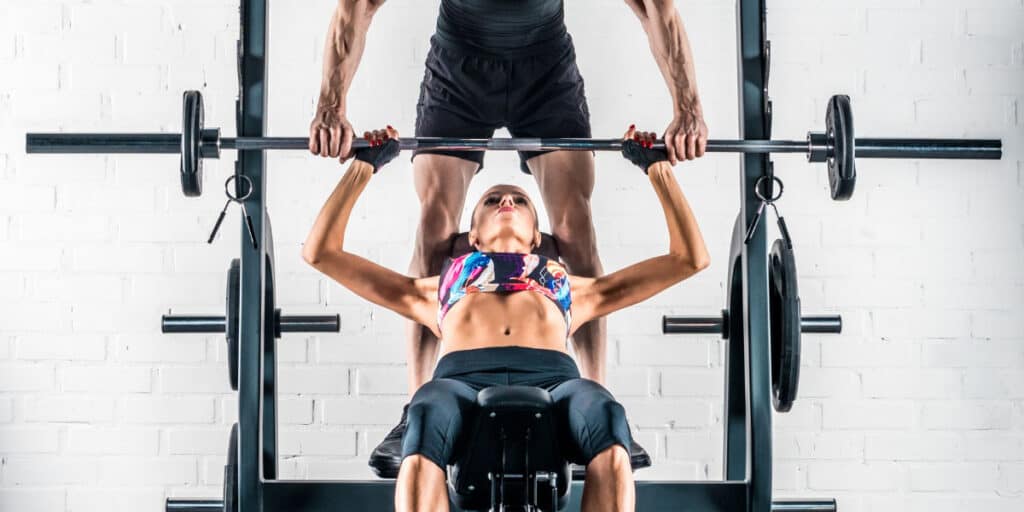For most of us, muscle soreness is a sign for taking it easy and maybe taking a day off from training. But there are those few among us who live by the motto “no days off,” even when their body is so sore that they can barely move.
It is great to do Pilates when your muscles are sore. In fact, it is one of the best things you can do for sore muscles. The dynamic movements involved in Pilates are excellent at reducing inflammation by improving blood circulation to your muscles. Pilates is a great workout recovery tool.
Getting yourself in the mood to do some Pilates on a day when your body is very sore takes a lot of willpower. But the results that it yields are worth it. In the rest of this article, I’ll explain why it is OK to do Pilates when your muscles are sore, why it is beneficial, and how to do it safely.
Why It’s Safe To Do Pilates When You’re Sore
Pilates is safe to do the day after a workout that makes you sore. The soreness is not a sign of an injury. Rather, it’s caused by small tears in the muscles that come after any strenuous workout.

When you train hard, especially with weights, this will cause lots of tiny tears in your muscle fibers. The muscle fibers then use proteins to repair themselves and grow back stronger. This is the process of building muscle and gaining strength.
The fact of the matter is that when your muscles are repairing themselves, you are going to be very sore. Scientists call this Delayed Onset Muscle Soreness. Most of the soreness comes from a strong inflammatory response from your body due to the tiny muscle tears.
The inflammatory response and the pain that comes with it are standard parts of building muscle. You shouldn’t be worried about this—in fact, it’s a sign that you had a good workout. You are not injured at all, so it is perfectly fine to go through a light Pilates routine to keep your body moving and avoid rigidity in your muscles.
Pilates is a very low-impact type of exercise. You typically use only your own body weight. There are many levels of complexity as well, so you can customize a Pilates routine to fit your recovery needs.
If you are an athlete that is used to very intense training, a relaxing Pilates session can be a nice change of pace. Even athletes should remember that when using Pilates as a recovery tool the movements and the tempo should be mild.
Pilates is very safe to do even when sore if it is done correctly. When practising recovery Pilates, focus on your form when performing the exercises. Take your time and make sure to breathe. Keeping your breathing under control is imperative to get the full recovery benefits of Pilates.
If you like to do intense exercise, such as weight lifting, after your Pilates routine, you may want to tone it down a bit while you’re still sore. Here’s an article where I talk about that in detail.
Why Pilates Is Beneficial When You’re Sore
Practising Pilates has profoundly positive effects on the mind and is incredibly healthy for the body. It is an excellent activity for relieving stress, and there is scientific evidence of its benefits in recovery.
It Focuses on Core and Back Muscles
Pilates strengthens the core and the back muscles, which are used in nearly every type of movement we make throughout our lives. Having strong back and abdominal muscles aids in recovery, as you won’t be as reliant on your secondary muscle groups that will be the sorest after strenuous training.
It Can Be Slowed Down
The very nature of Pilates makes it perfect for recovery. It is a form of exercise that can be slowed down to fit the needs of the person practising it, there are no weights or sprinting involved, and stress on the joints is minimized.
The pace of Pilates allows you to slow down and focus on your heart rate and breathing. These two things are essential to your recovery process. Your heart needs to be circulating enough blood, and you need to be breathing in enough oxygen to get some extra circulation to your sore muscles.
Using your sore muscles is the best way to get more blood and oxygen pumping to them. You don’t want to overwhelm your muscles, though. This is why the pace is slow, and the exercises are gentle.
Here is an example of a relaxing Pilates workout, one that helps you move your body without being too strenuous.
How To Safely Practice Pilates When You’re Sore
Keep Your Heart in Check
Keeping both your heart rate and your breathing under control are great ways to know if your recovery is going well. If you’re finding it hard to keep your heart rate down, that could mean that your heart has to work harder and pump more blood to your muscles to keep them going.
If you feel overwhelmed during a Pilates routine, take a break and catch your breath. Overdoing it will negate all the benefits. Rest is an essential part of recovery. Another trick to check how well your recovery is going is to monitor your heart rate while you sleep.
If your heart rate stays elevated while you are sleeping, you need to give your body a day off. You should also check your hydration levels and ensure you are eating enough calories daily.
Pilates can be a fantastic tool to add to your list of remedies for soreness. It is excellent to use as a sort of change-up workout or something you can incorporate as a part of your regular recovery routine. Just remember to take it easy and focus on the fundamentals.
Focus on Form
Focus is the key word when it comes to safely practising Pilates. When using it as a recovery tool, your focus should be on perfect form and technique. On recovery days, it’s good to go back to beginner-level exercises and perfect them.
Any balance-type exercises you attempt during your routine should be rudimentary. The soreness will make your secondary muscle groups less stable. Avoid any exercises that target specific muscles and instead focus on things that incorporate large muscle groups.
Set a Goal
Stay focused on the fact that while you are getting stronger by doing this Pilates routine, the main goal is just to get your body moving around a bit. The point of doing Pilates for recovery is to get some extra blood flow to your muscles while working on core strength and balance.
Approaching your Pilates routine with the proper mindset is key to setting the tone of the workout and sticking to it. A consistent idea of what you are trying to accomplish with the Pilates routine you are performing will create a mind-muscle connection that will help your form and immerse you deeper into a relaxing workout.
Feel Your Muscles
When practising Pilates for recovery, you should focus on feeling your muscles, heart, lungs, and mind all working as one. Envision the parts of your body working in unison as you perform each exercise, deliberately paying extra attention to your form.
Conclusion
Not only is it OK to do Pilates when you are sore, but it is also incredibly beneficial, and you should be doing Pilates when you are sore. Pilates increases oxygen and blood circulation to your muscles without elevating your heart rate too much.
The added circulation aids in recovery by decreasing inflammation. When the inflammation subsides, so will most of the pain from being sore.
Moving around and performing exercises is difficult when you’re very sore, but Pilates is an excellent addition to anyone’s recovery routine. It is therapeutic for the body and the mind as well.
Sources




